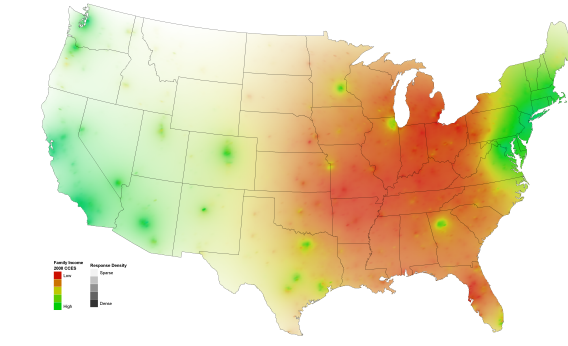David Sparks has a series of very cool maps that combine public opinion findings with illustrations of density so as to illustrate the point that the geography of (say) anti-abortion sentiment is much more extensive than the total number of people who hold anti-abortion views would suggest. But what he has above is not a map of public opinion but of family income, illustrating quite plainly the link between major metropolitan areas and prosperity. I wish I’d been able to poach this for my book because it nicely illustrates the point that ability to migrate to the rich coastal zones is an important potential source of prosperity for the United States. Everyone knows that people go from Mexico to the United States in search of better jobs, and the same factors ought to take people out of the Rust Belt and toward the coasts. Except it can only happen if we build houses there.
This map also illustrates a few more nice points about American economic geography. One is that Chicago and Minneapolis, though not necessarily the greatest places to spend the winter, are the big winners in terms of combining economic opportunity and housing affordabilty. Another is that Texas has a great opportunity to turn the Texas Triangle metros into a third great megalopolis to stand beside the two coastal ones. But it will probably require better connectivity between San Antonio, Austin, Dallas, Fort Worth, and Houston than currently exists. I don’t have any real idea of whether Rick Perry’s ill-fated Trans-Texas Corridor mega-project was a good idea, but the region is, in fact, ripe for some kind of massive new projects.
